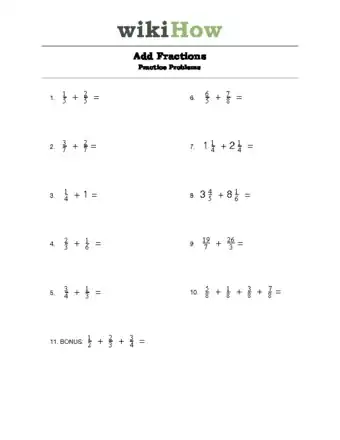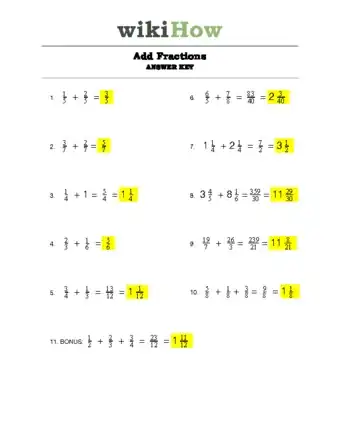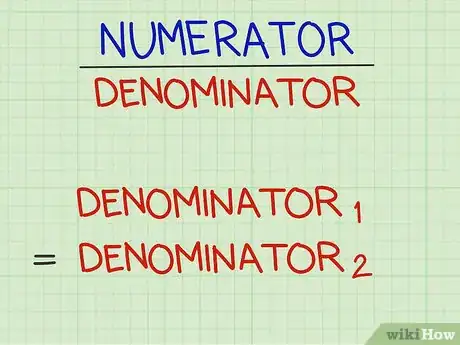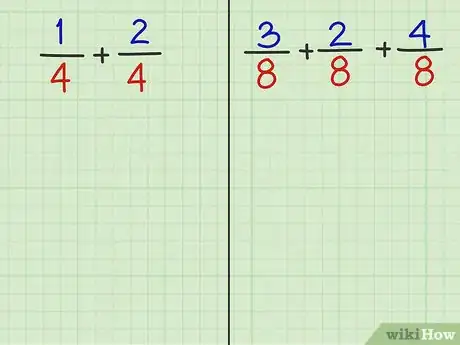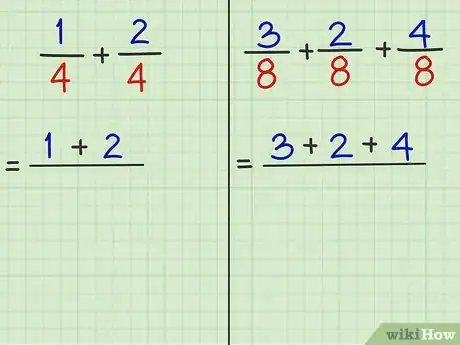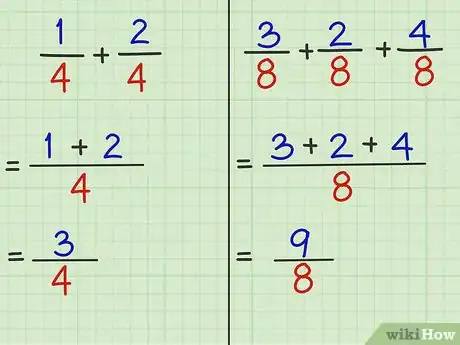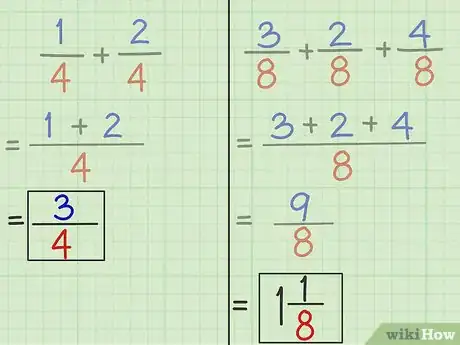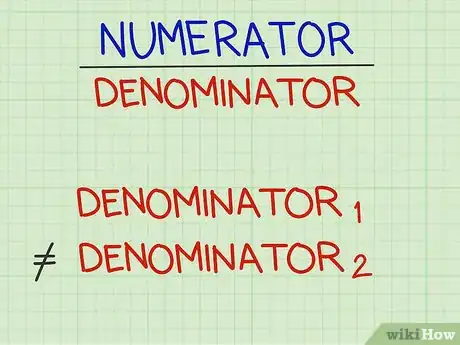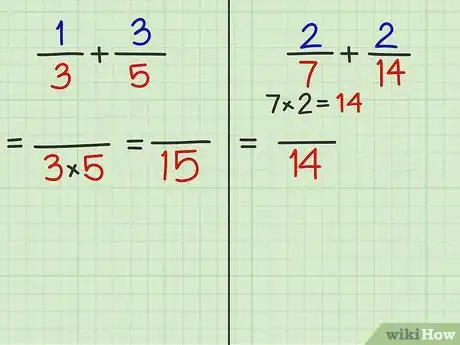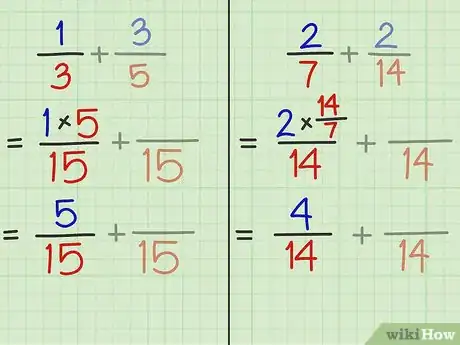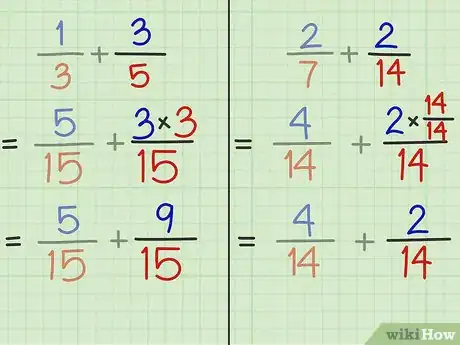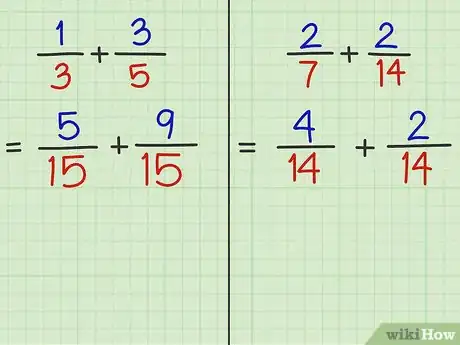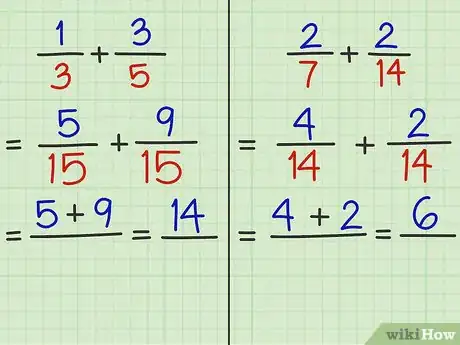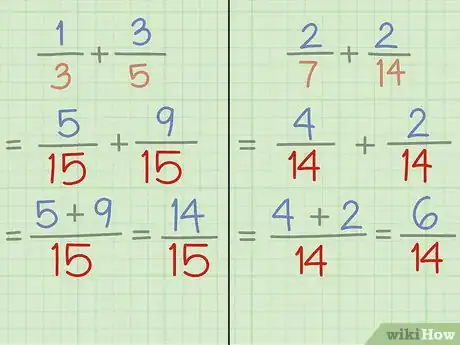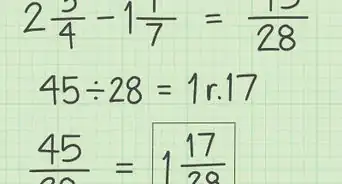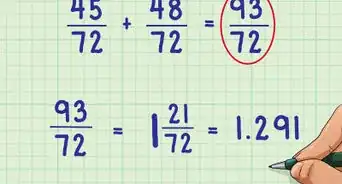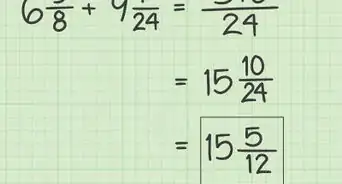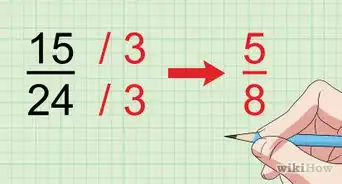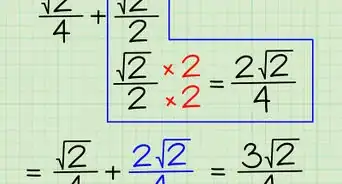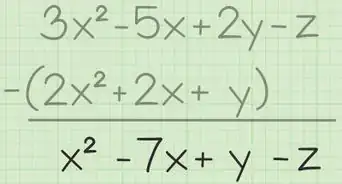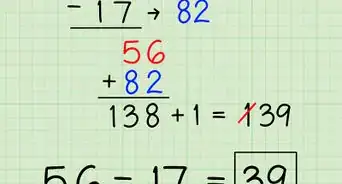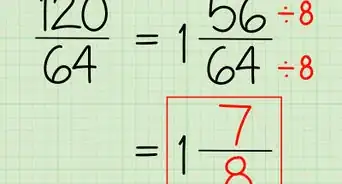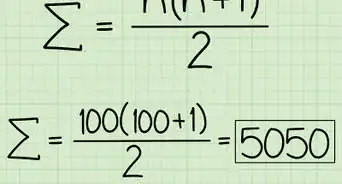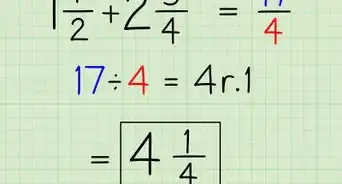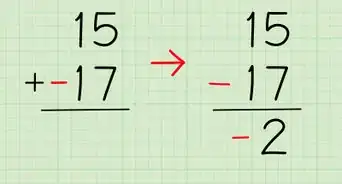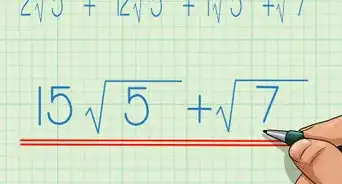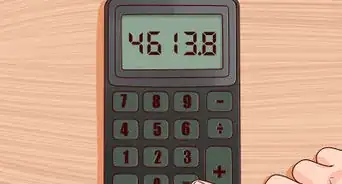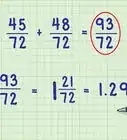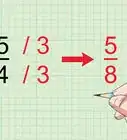This article was co-authored by David Jia. David Jia is an Academic Tutor and the Founder of LA Math Tutoring, a private tutoring company based in Los Angeles, California. With over 10 years of teaching experience, David works with students of all ages and grades in various subjects, as well as college admissions counseling and test preparation for the SAT, ACT, ISEE, and more. After attaining a perfect 800 math score and a 690 English score on the SAT, David was awarded the Dickinson Scholarship from the University of Miami, where he graduated with a Bachelor’s degree in Business Administration. Additionally, David has worked as an instructor for online videos for textbook companies such as Larson Texts, Big Ideas Learning, and Big Ideas Math.
There are 8 references cited in this article, which can be found at the bottom of the page.
This article has been viewed 269,617 times.
Adding fractions is a very handy skill to know. Not only is it an important part of school — from elementary school all the way up to high school — it's also a really practical skill to know. Read on for more information about adding fractions. You'll be spinning with knowledge in just a few minutes.
Steps
Practice Problems
With Like Denominators
-
1Check the denominators (bottom numbers) of each fraction. If they are the same number, then you're dealing with fractions that have the same denominator.[1] If not, skip to the section down below.
-
2Here are two example problems we'll work on in this section. By the last step, you should understand how they were added together.
- Ex. 1: 1/4 + 2/4
- Ex. 2: 3/8 + 2/8 + 4/8
Advertisement -
3Take the two numerators (top numbers) and add them up. The numerator is the number on top of the fraction. However many fractions you have, if they have the same bottom numbers, add up all the top numbers.[2]
- Ex. 1: 1/4 + 2/4 is our equation. "1" and "2" are the numerators. That means 1 + 2 = 3.
- Ex. 2: 3/8 + 2/8 + 4/8 is our equation. "3" and "2" and "4" are the numerators. That means 3 + 2 + 4 = 9.
-
4Start putting together your new fraction. Take the sum of the numerators you got in Step 2; that sum will be your new numerator. Take the denominator that was the same for each fraction. Don't do anything to it. This is your new denominator; it will always be the same as the old denominator when you add fractions with the same denominators.
- Ex. 1: 3 is our new numerator, and 4 is our new denominator. This gives us an answer of 3/4. 1/4 + 2/4 = 3/4.
- Ex. 2: 9 is our new numerator, and 8 is our new denominator. This gives us an answer of 9/8. 3/8 + 2/8 + 4/8 = 9/8.
-
5Simplify if necessary. Simplify the new fraction to make sure it's written as simply as possible.[3]
- If the numerator is bigger than the denominator, like it is in Ex. 2, that means we can take out at least one whole number. Divide the top number by the bottom number. When we divide 9 by 8, we get 1 whole number and a remainder of 1. Put the whole number out in front of the fraction and the remainder in the numerator of the new fraction, leaving the denominator the same.
9/8 = 1 1/8.
- If the numerator is bigger than the denominator, like it is in Ex. 2, that means we can take out at least one whole number. Divide the top number by the bottom number. When we divide 9 by 8, we get 1 whole number and a remainder of 1. Put the whole number out in front of the fraction and the remainder in the numerator of the new fraction, leaving the denominator the same.
With Unlike Denominators
-
1Check the denominators (bottom numbers) of each fraction. If the denominators are different numbers, then you're dealing with unlike denominators. You're going to have to find a way to make the unlike denominators be the same. This guide will help you do that.[4]
-
2Here are two example problems we'll work on in this section. By the last step, you should understand how they were added together.
- Ex. 3: 1/3 + 3/5
- Ex. 4: 2/7 + 2/14
- Ex. 5: 1/8 + 1/6
-
3Find a common denominator. Do this by finding a "multiple" of the two denominators. An easy way to find one is to simply multiply the two denominators together and then divide by a common factor if applicable. If one of the numbers multiplies into the other numbers, you may only need to multiply one of the fractions.[5]
- Ex. 3: 3 x 5 = 15. Since there is no number other than 1 that can be divided into both 3 and 5, 15 is the lowest common denominator. Both of our fractions will have a denominator of 15.
- Ex. 4: 14 is a multiple of 7. So all we have to do is multiply 7 by 2 to get 14. Both of our fractions will have a denominator of 14.
-
4Multiply both numbers on the first fraction by the bottom number of the second fraction. We're not changing the value of the fraction; we're just changing how the fraction looks. It's still the same fraction.[6]
- Ex. 3: 1/3 x 5/5 = 5/15.
-
Ex. 4: For this fraction, we only have to multiply the first fraction by 2, because that's what gives us our common denominator.
- 2/7 x 2/2 = 4/14.
-
5Multiply both numbers on the second fraction by the bottom number of the first fraction. Again, we're not changing the value of the fraction; we're just changing how the fraction looks. It's still the same fraction.
- Ex. 3: 3/5 x 3/3 = 9/15.
- Ex. 4: We don't need to multiply the second fraction because both fractions already have their common denominators.
-
6Line both fractions up side by side with their new numbers. We haven't added them yet, but that will come soon! What we've done is multiple each fraction by the number 1. Our goal here was to get the denominators to look exactly the same.
- Ex. 3: instead of 1/3 + 3/5, we have 5/15 + 9/15
- Ex. 4: instead of 2/7 + 2/14, we have 4/14 + 2/14
-
7Add together the numerators of the two fractions. The numerator is the top number of the fraction.[7]
- Ex. 3: 5 + 9 = 14. 14 will be our new numerator.
- Ex. 4: 4 + 2 = 6. 6 will be our new numerator.
-
8Take the common denominator that you figured out in Step 2 and add it on the bottom of your new numerator. Or, just keep the denominator that's on the changed fractions already — it's the same number.
- Ex. 3: 15 will be our new denominator.
- Ex. 4: 14 will be our new denominator.
-
9Put the new numerator on top and the new denominator on bottom.
- Ex. 3: 14/15 is our answer to 1/3 + 3/5 = ?
- Ex. 4: 6/14 is our answer to 2/7 + 2/14 = ?
-
10Simplify and reduce. Simplify by dividing both the numerator and the denominator in the fraction by each number's greatest common factor.[8]
- Ex. 3: 14/15 cannot be simplified.
- Ex. 4: 6/14 can be reduced to 3/7 by dividing both the top and the bottom numbers by 2, the greatest common factor.
Community Q&A
-
Question5/8+1/8 +3/8 + 7/8, and then I added everything and came up with 16/8. Is that wrong?
 OrangejewsCommunity AnswerLooks right to me. Maybe it expected you to then simplify 16/8 to 2, in which case your answer still isn't wrong, merely incomplete.
OrangejewsCommunity AnswerLooks right to me. Maybe it expected you to then simplify 16/8 to 2, in which case your answer still isn't wrong, merely incomplete. -
QuestionWhat is 1/2 * 1/2?
 DonaganTop AnswererYou're really asking, "What is half of a half?" It's a quarter. Mathematically it's done this way: ½ x ½ = ¼, where you multiply the two numerators together (1 x 1 = 1), and you multiply the two denominators together (2 x 2 = 4).
DonaganTop AnswererYou're really asking, "What is half of a half?" It's a quarter. Mathematically it's done this way: ½ x ½ = ¼, where you multiply the two numerators together (1 x 1 = 1), and you multiply the two denominators together (2 x 2 = 4). -
QuestionHow to add if the numerator ends up bigger than the denominator?
 Community AnswerYou just add normally. If the numerator ends up bigger than the denominator, you can either leave it as is or convert the fraction to a mixed number, depending on the instructions you received.
Community AnswerYou just add normally. If the numerator ends up bigger than the denominator, you can either leave it as is or convert the fraction to a mixed number, depending on the instructions you received.
References
- ↑ https://www.khanacademy.org/math/arithmetic/fraction-arithmetic/arith-review-adding-subtracting-frac/v/adding-fractions-with-like-denominators
- ↑ https://www.mathsisfun.com/fractions_addition.html
- ↑ https://www.mathsisfun.com/simplifying-fractions.html
- ↑ https://www.khanacademy.org/math/arithmetic/fraction-arithmetic/arith-review-add-sub-fractions/v/adding-small-fractions-with-unlike-denominators
- ↑ http://www.algebra-class.com/adding-fractions-with-unlike-denominators.html
- ↑ https://www.youtube.com/watch?v=RIhwfqULbAE
- ↑ https://youtu.be/tDQipFjAoT8?t=274
- ↑ https://www.mathsisfun.com/greatest-common-factor.html
About This Article
To add fractions, start by checking the denominator of each fraction to make sure it’s the same number. If not, multiply each fraction by the other fraction’s denominator to give them a common denominator. For example, when adding ⅓ and ⅗, your new denominator would be 15, and the new multiplied fractions would be 5/15 and 9/15. Once you have the same denominator, add only the numerators together, and put them over the new denominator. For the example, the answer would be 14/15. If you want to learn how to simplify your answers, keep reading the article!
